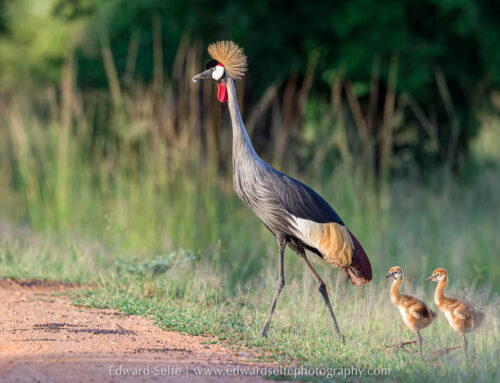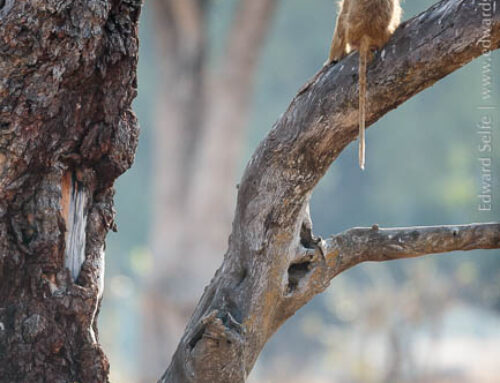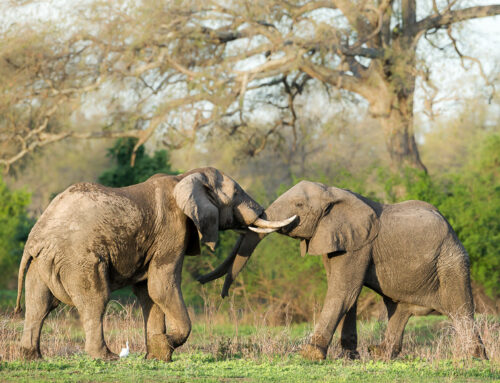Lions; they are synonymous with safari, representatives of companies and evocative of the romance of the bush. Their ability to conjure emotions in us that range from abject fear, through weighty respect, to love and adoration is matched perhaps only by elephants. And yet, these are creatures that often sleep for 20 hours per day; how can they have generated such iconic status? It’s those last 4 hours that count.
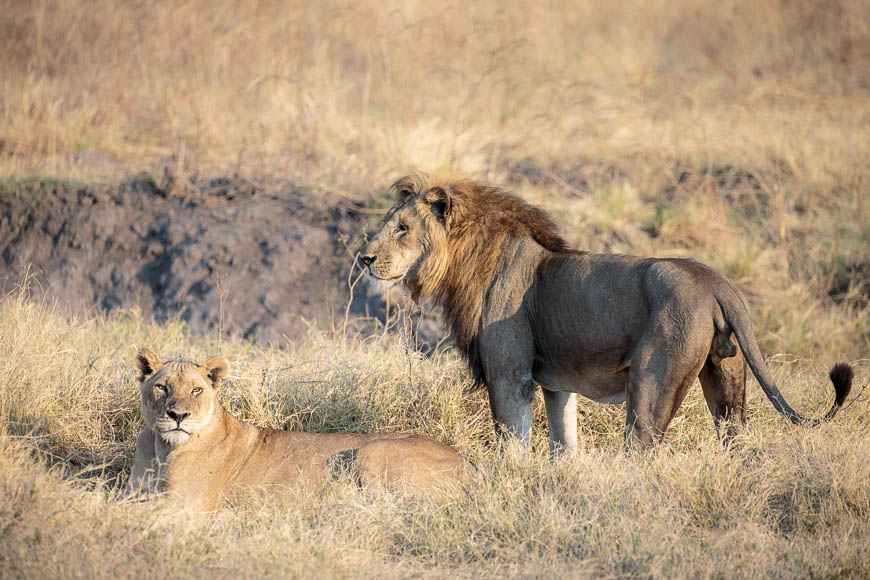
Being at the very top of the food chain, eating rich, high-energy food enables lions to take on board the calories they need in short feeding bouts. Combined with their co-operative nature — unique among cats — they are able to bring down large prey which can sustain them for relatively long periods. This leaves ample time for lounging around, and visitors to Africa will have very often seen lions “just sleeping”!
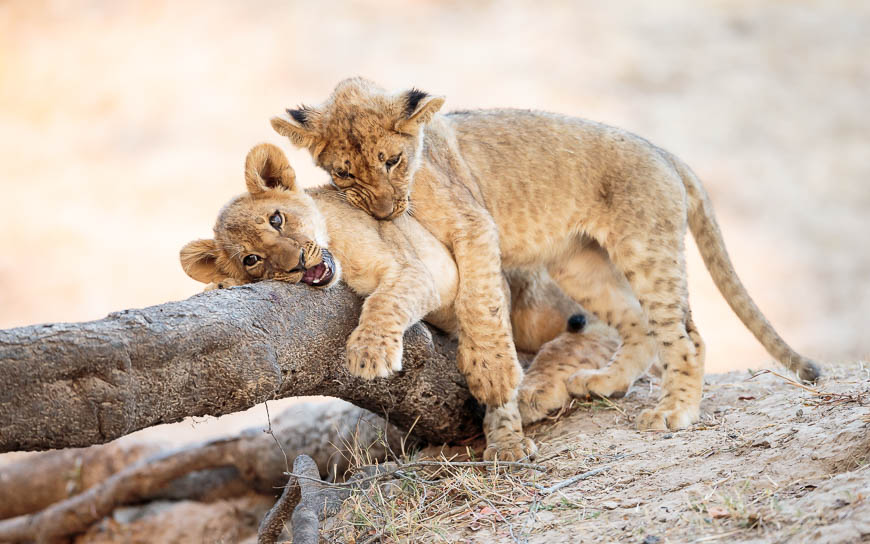
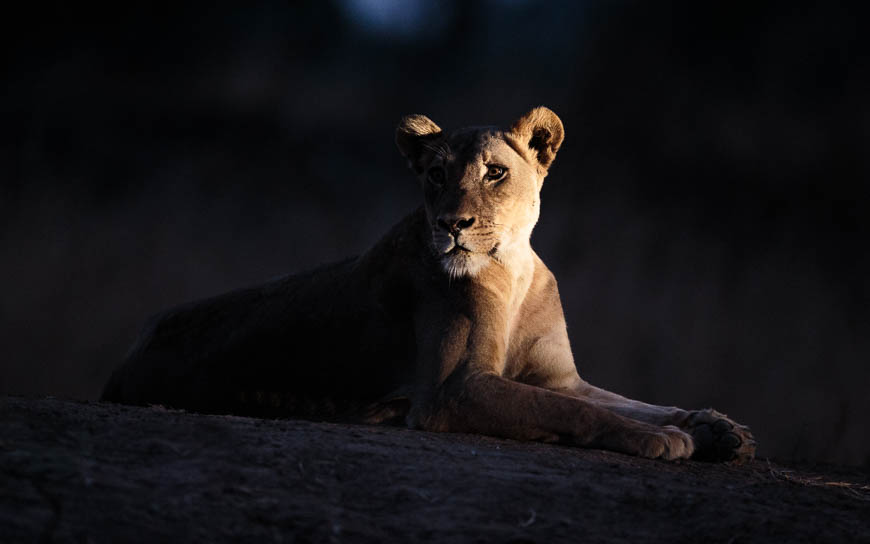
But when they are awake, lions are the most fascinating and complex of creatures. Cats are usually solitary, so observing animals that show all the traits of cat behaviour, but blended with the “pack” structure, more often seen in dogs and wolves, is very engaging. Lion groups, known as prides, are made up of adult females, their female relatives, and all of their cubs. Usually this closely related pride of females are protected and dominated by a large male or coalition of large males. The strength of the bond between related females is clear to see; head-rubs, social grooming and friendly contact occurs throughout the day.
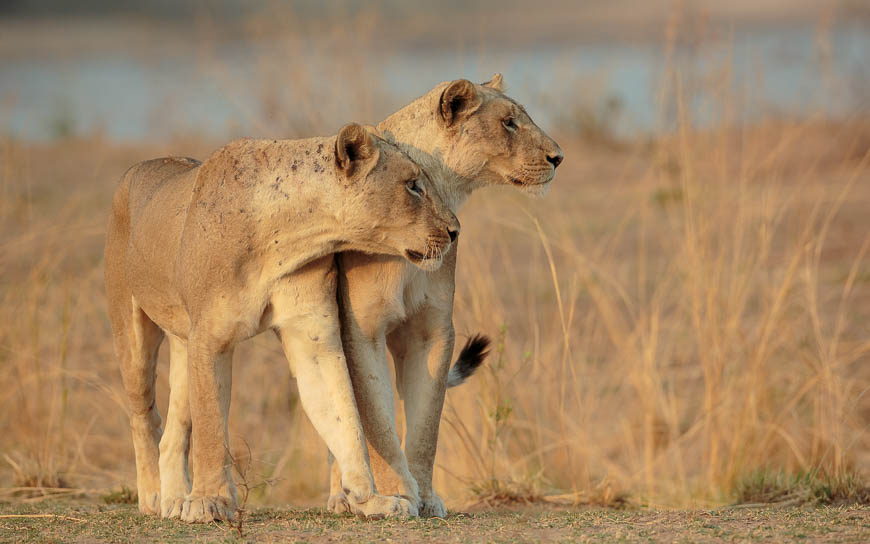
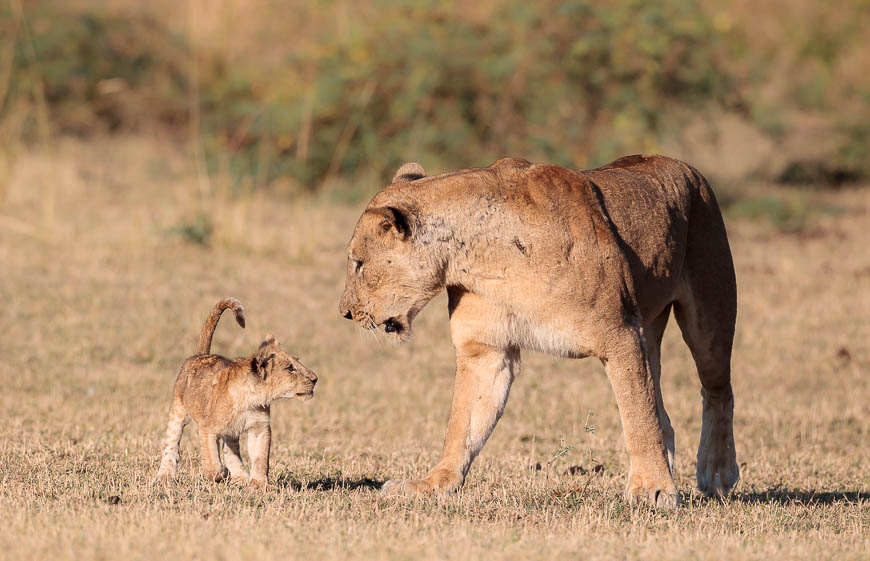
To understand how this social structure comes about, we have to look at the strongest force in Nature – the desire to mate and successfully rear young. Male lions want to mate and lionesses want a safe place to raise their cubs. To foster this situation, male lions carve out a territory and defend it against incursions by other males. Through calls (their distinctive roar), scent marking and patrols, they repel any other males from entering their area. After mating with his group of females, the cubs are born into a safe area, free from other males who would seek to kill young cubs and mate with their mothers.
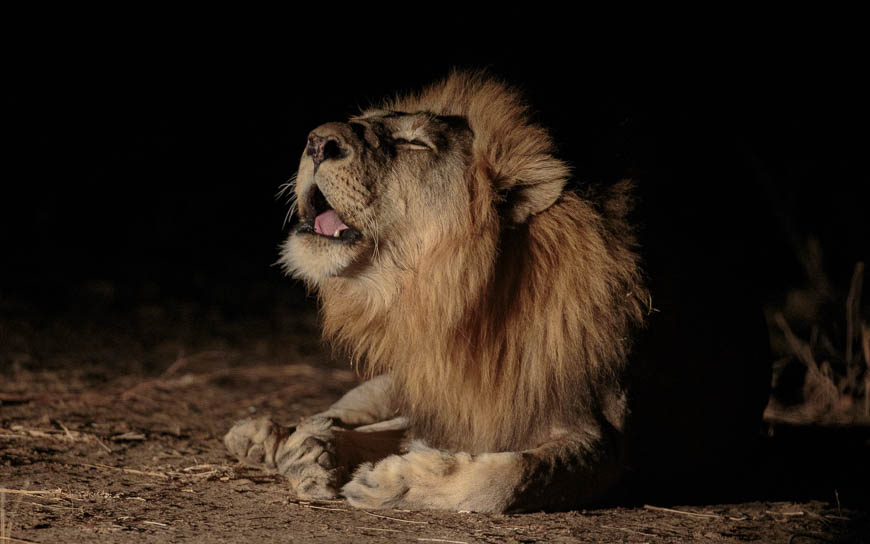
In return for this protection, males exact a price from the females; they dominate on carcasses and sometimes take the whole prize from the females if it is a small kill. While this seems very unfair, without the dominance of the male — which he so ably displays when stealing kills! — the females would have little chance of raising young safely.
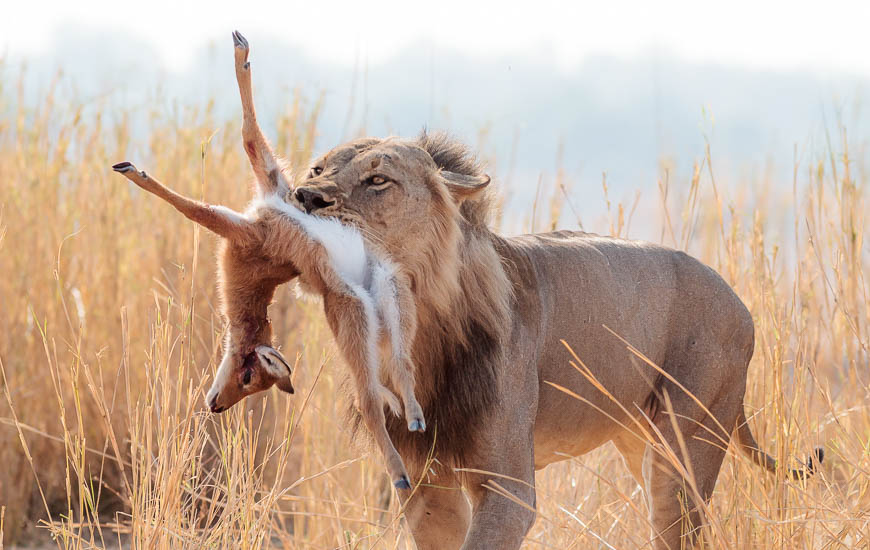
Lion cubs grow up in the pride, protected by the structure of the group and provided for by the excellent hunting abilities of the adults. Female cubs will likely stay in the pride their whole lives, but males will leave aged around 3, spend some time maturing in the hinterland and then hope to find their own pride of females around the age of 6. A 3 year old male leaving the pride on his own will not likely survive the years of solitude; therefore lionesses in a pride will often come into oestrus at similar times to increase the chance a cohort of male cubs who can mature and leave the pride at the same time. A group of 3 or 4 males will enjoy much greater chances of surviving and taking on a pride of their own.
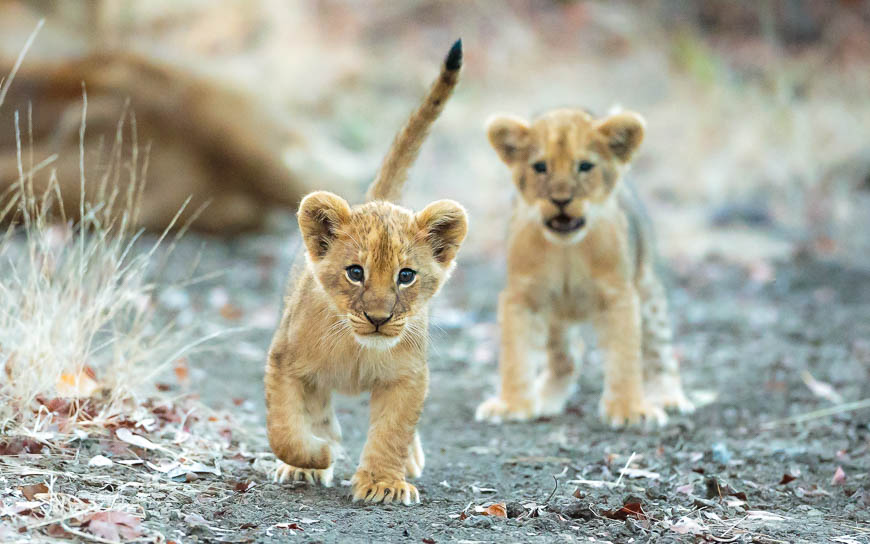
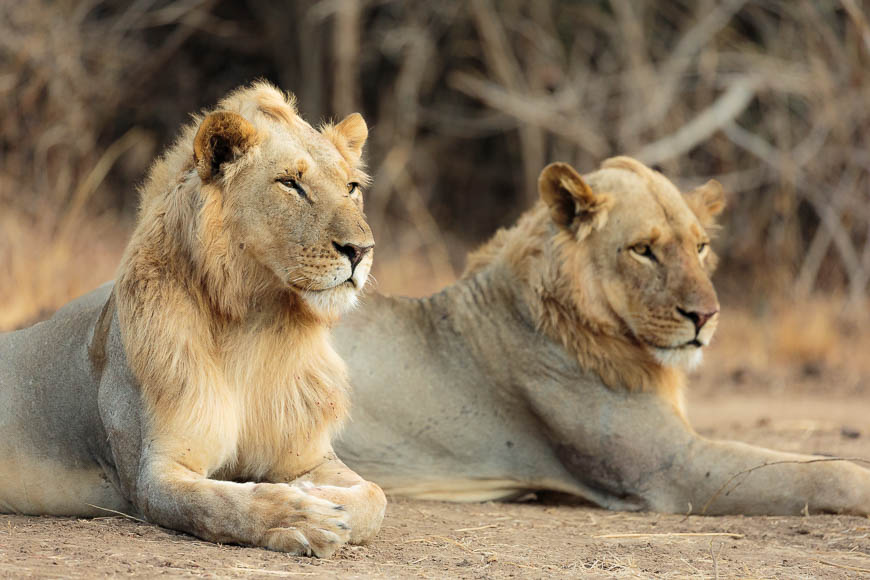
Lion hunts normally take place at night. With excellent night vision, they are at distinct advantage over big and dangerous prey species such as buffalo, zebra and hippo. Of course, they could take on smaller prey, but with many mouths to feed, large animals offer a better reward for the effort. However, lions do take smaller prey, including warthogs, antelope, and occasionally larger prey such as elephants and giraffe.
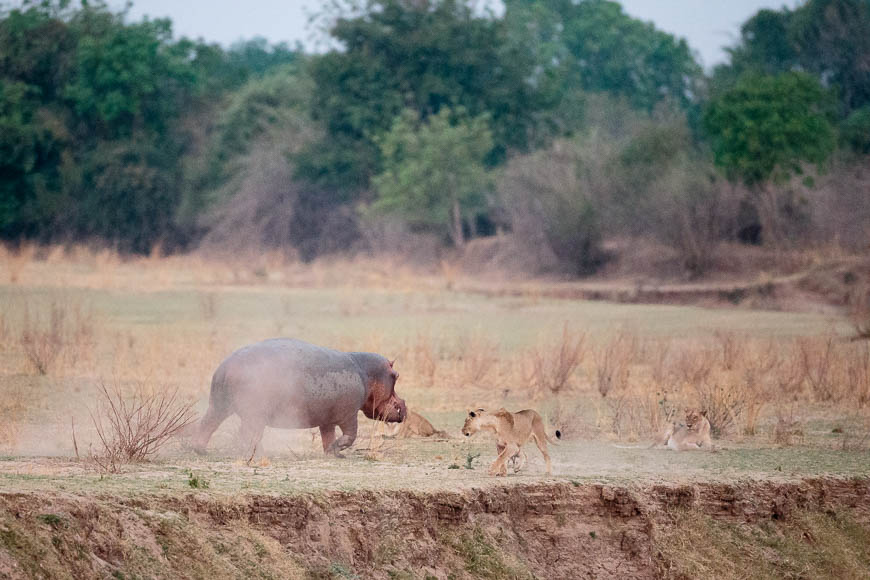
Hunts are usually choreographed by females in the prime of their lives. These 6-10 year olds determine when to start the hunt, how to approach the prey and usually make the decisive move when the time comes. This is sometimes communicated without a sound, or using a series of low moaning calls. Kills occur through a strangle-hold on the throat or nose, a bite to the neck or, least efficiently, by simply starting to feed. Lions’ low-slung, highly muscular bodies are well adapted for the speed and strength required to bring down creatures that are often 5 times their own weight.
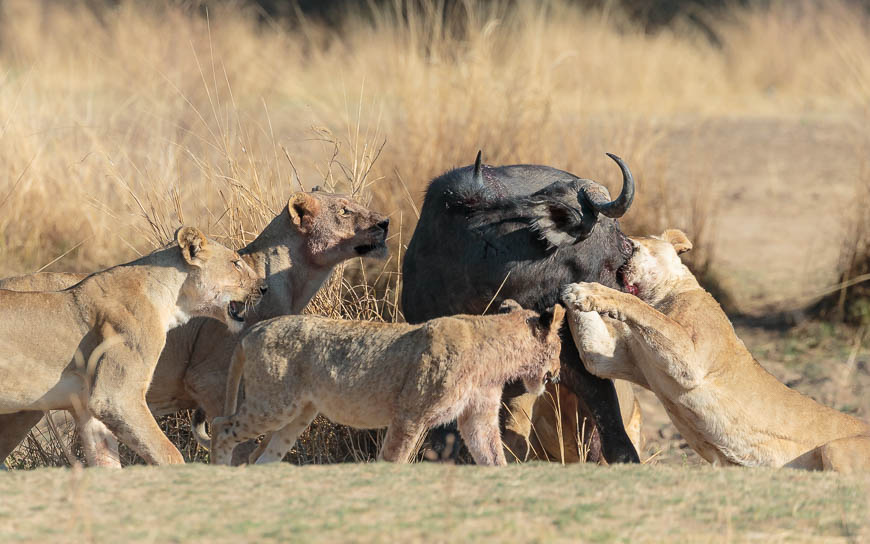
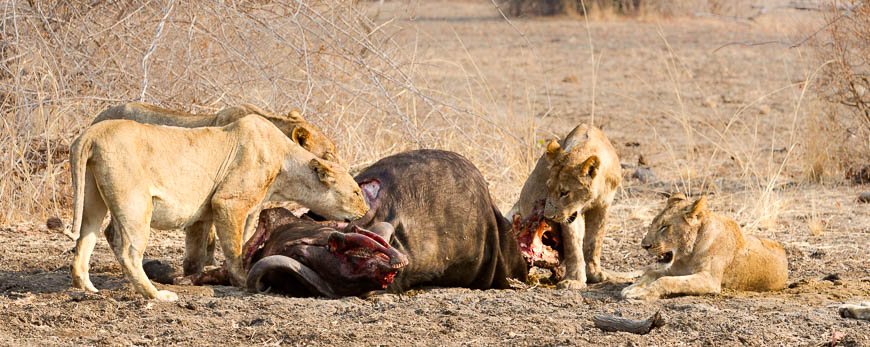
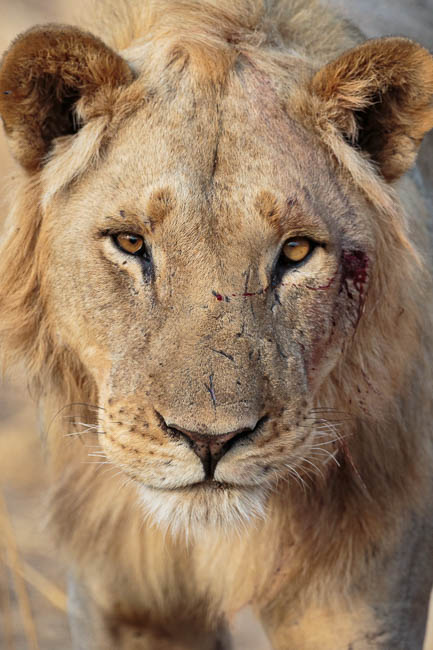
In some areas, lions are marred by the activity of hyaenas who seek to challenge them on carcasses. Hyaenas often occur in large clans and work together to drive lions off their kill. The presence of male lions will usually deter hyaenas — another way that they earn their share of kills — but numbers usually prevail in the end. However, hyaenas are patient and usually enjoy the remains of the carcass when the lions have moved off; skin, bones, horns and hooves are usually left behind.
As mentioned above, of primary concern to females is a safe environment to rear cubs. The risk of mating with a transitory male, bearing cubs and then finding that he is not around to protect them is high. Therefore lionesses need a male to mate repeatedly — every 25 minutes over 4 to 5 days — before she will ovulate. This requires him to prove his fitness and prowess. This also allows time for other males to challenge the incumbent for his mating rights; both these functions ensure that females bear cubs to males that will still be around over the coming months to protect them. Even with this safeguard, very many lion cubs do not survive their earliest months, succumbing to starvation (if females fear to visit them in case of attracting males to their location) or death by hyaenas or other lions.
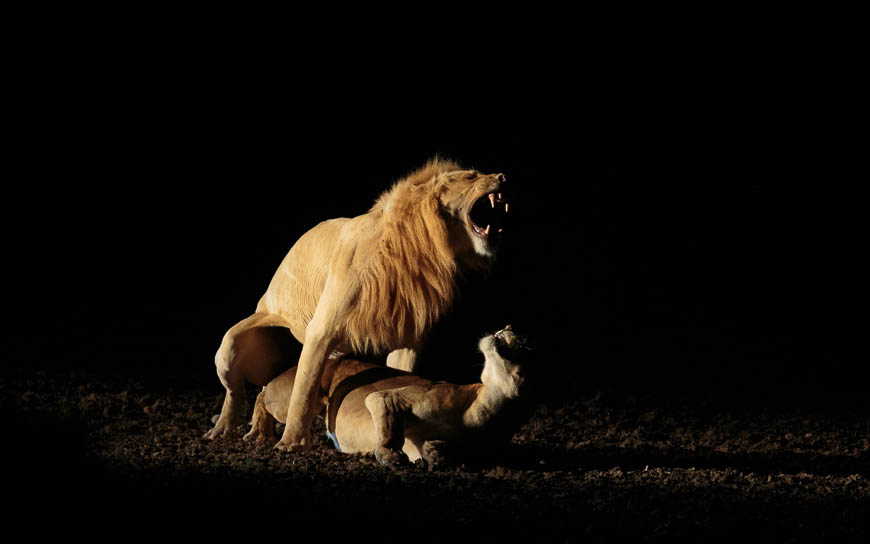
To protect their areas, males travel large distances at night, calling regularly and scent-marking their route. It’s common for them to travel many kilometres which surely takes a toll and contributes to their apparent exhaustion during the day! Males are often maligned for their “laziness” in sleeping all day and then stealing kills from the females at night, but the social system that lions have developed (the only one of its kind in felids) is a triumph of efficiency and survival of the fittest.
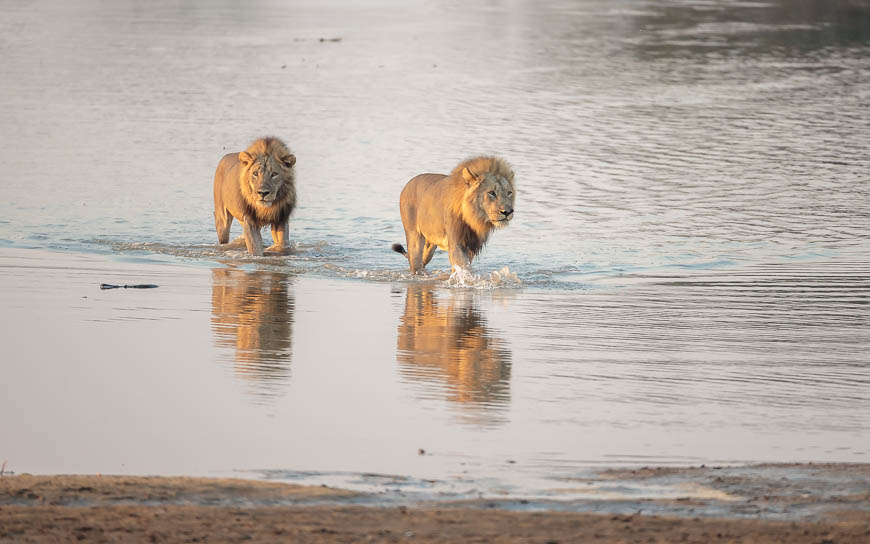
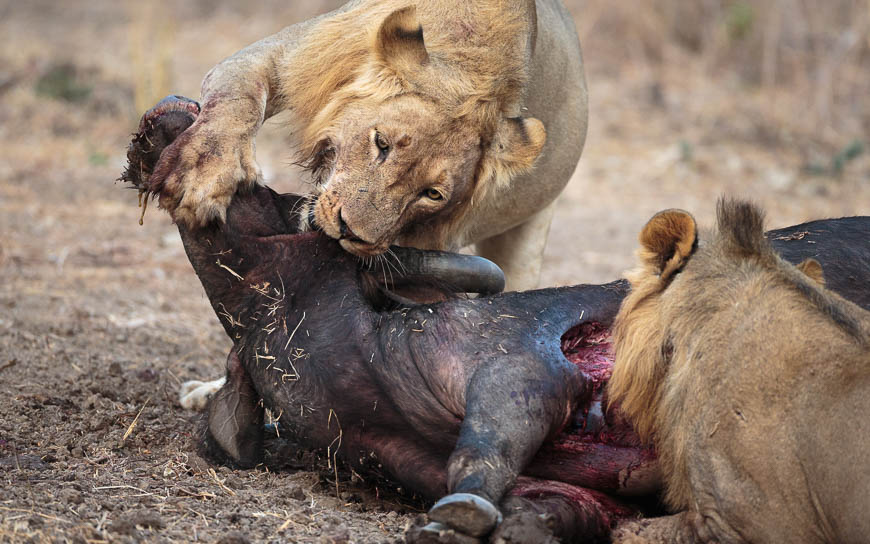
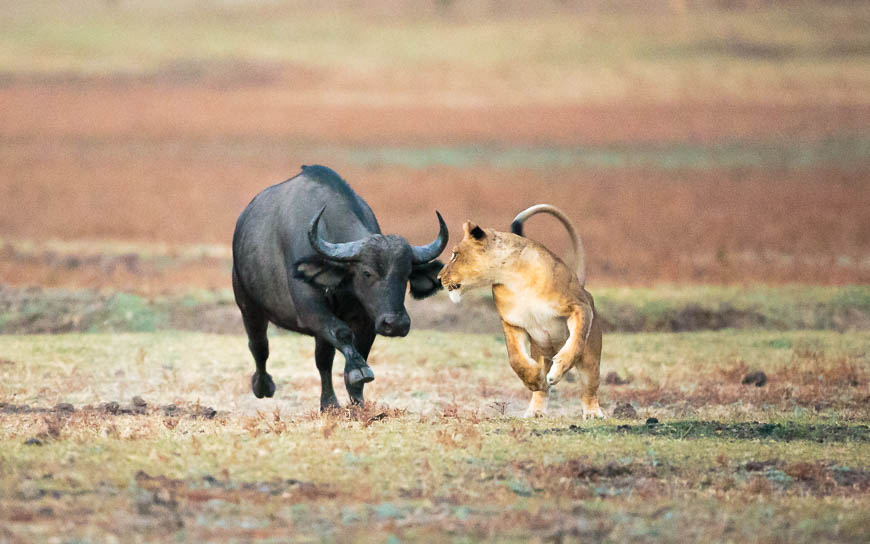
It’s true that lions spend a lot of time asleep. But while awake they are fascinating and interesting. Often the periods just after waking up are when lions are most social and interactive; waiting around for them to rouse and start to greet each other is a wonderful reward for your patience.

